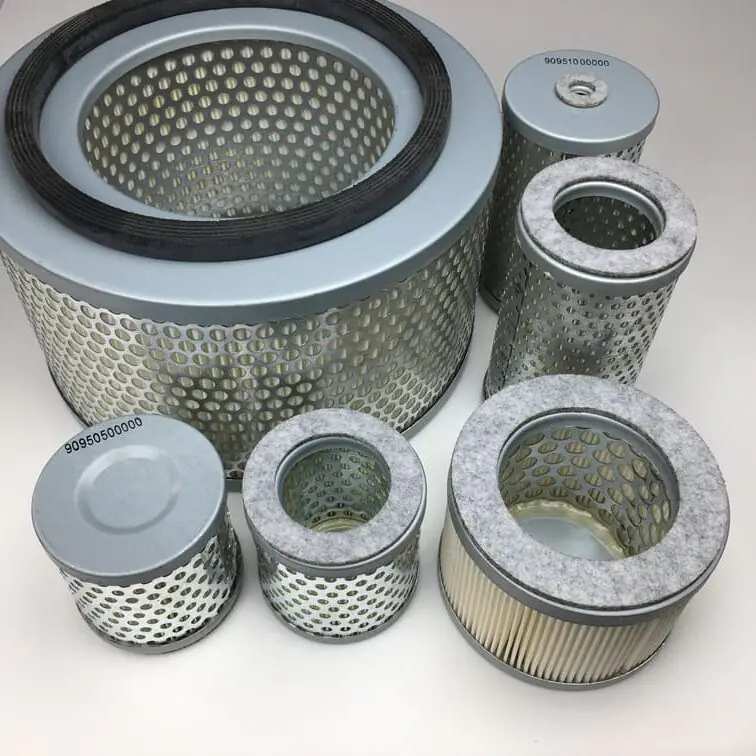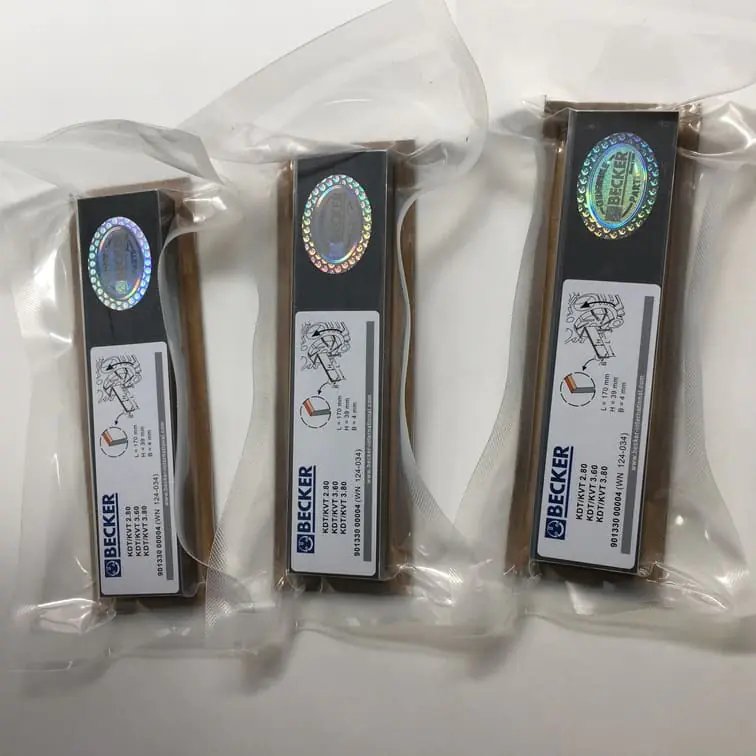What is a Vacuum Pump in a Car?
A vacuum pump plays a crucial role in the smooth operation of modern vehicles, yet it’s often an overlooked component. For many car owners, the mechanics behind various engine systems remain a mystery—and the vacuum pump is no exception. But understanding how a vacuum pump works, its purpose, and how it impacts your vehicle can help you take better care of your car. In this comprehensive guide, we explore what a vacuum pump is, its importance in an automotive setting, and its relationship with the various systems in a car.
What Exactly Is a Vacuum Pump?
In a car, a vacuum pump is a mechanical device that creates the necessary vacuum needed to power certain vehicle systems. Most commonly, these systems include brake boosters, emission control systems, and turbochargers, depending on the type of engine your car has.
Unlike many other components that are powered directly by the engine, the vacuum pump is designed to produce negative pressure—in other words, a vacuum. This vacuum is essential for operating various systems, particularly in cars with turbocharged or diesel engines. These engines typically do not produce sufficient natural vacuum due to their mechanical designs.
Key Functions of a Vacuum Pump
- Brake Booster Assistance: The most important role of a vacuum pump is to assist with braking. The brake booster uses vacuum to multiply the force applied to the brake pedal, making it easier for the driver to bring the vehicle to a halt.
- Turbocharger Operation: In turbocharged engines, vacuum pumps help regulate turbo boost pressure by controlling the wastegate valve.
- Emission Control Systems: Some emission systems also use vacuum to control valves that regulate exhaust gas recirculation and other emission control devices.
Without a working vacuum pump, a car might experience weak brakes, higher emissions, and decreased overall performance. This underlines why the vacuum pump, although relatively small and often hidden away, is a major component in your vehicle’s operation.
How Does a Vacuum Pump Work?
A vacuum pump in a car usually works by using the engine’s rotation or an electric motor to generate a low-pressure environment. The pump is either mechanically driven—typically off the camshaft or belt—or electrically driven, providing consistent vacuum regardless of engine load.
Types of Automotive Vacuum Pumps
There are several types of vacuum pumps that might be used in a vehicle:
- Mechanical Vacuum Pumps: These pumps are connected to the engine and driven via a belt or chain. They work directly with the engine’s camshaft or crankshaft, meaning they are dependent on engine speed to generate vacuum.
- Electric Vacuum Pumps: Electric pumps operate independently of the engine speed, which makes them highly reliable, particularly for stop-start systems where the engine may cut off but the need for vacuum still exists.
Vacuum Pump Components
To better understand how a vacuum pump works, it helps to look at the main components involved:
- Rotor: A rotating element that creates the vacuum by pushing air out of the pump.
- Chamber: The area where the air is compressed and expelled.
- Valves: Control the entry and exit of air from the pump.
These components work in unison to maintain the vacuum levels required for optimal vehicle performance.
Why Do Cars Need a Vacuum Pump?
Not all engines produce adequate vacuum naturally. For instance, gasoline engines with direct injection, turbocharged engines, and all diesel engines need assistance because their designs prevent them from producing the natural vacuum needed for some systems.
Vacuum Pump’s Impact on the Brake System
The brake booster relies heavily on a vacuum to operate efficiently. When you press down on the brake pedal, the vacuum created by the vacuum pump boosts the force, allowing you to brake without much physical effort. If your vacuum pump is faulty, you may experience hard brake pedals or increased braking distance.
Symptoms of a Failing Vacuum Pump
Here are some of the common signs that indicate your vacuum pump may be malfunctioning:
- Brake Warning Light: Since a vacuum pump aids in brake operation, any issue with it may trigger the brake warning light.
- Hissing Sound: A noticeable hissing sound from under the hood may indicate a vacuum leak.
- Poor Braking Performance: If the brakes feel unusually stiff or it takes longer for the car to come to a stop, it could mean the vacuum pump is not working as intended.
Maintaining a healthy vacuum pump can directly affect your safety and the overall driving experience.
Mechanical vs. Electric Vacuum Pumps: Which One is Better?
Mechanical and electric vacuum pumps both have their strengths and weaknesses. Which one is better often depends on the requirements of your vehicle and the type of driving you do.
Mechanical Vacuum Pumps
Mechanical pumps are simpler in design and have fewer electrical components, making them less likely to fail due to electronic malfunctions. However, because they rely on the engine to operate, they tend to be less efficient, particularly at lower speeds.
Electric Vacuum Pumps
Electric vacuum pumps offer several advantages, such as consistency and reliability in vacuum production. They can operate independently of the engine, providing a steady vacuum even when the engine is not running. This is especially useful in vehicles equipped with stop-start systems.
Electric pumps are also preferred for modern vehicles due to their ability to handle variable engine speeds and provide consistent performance. Their reliability, particularly in reducing emissions and aiding in fuel efficiency, makes them an attractive option for car manufacturers.
Maintenance and Replacement of a Vacuum Pump
A vacuum pump is generally a durable part, but like all components, it can wear out over time. Recognizing when a vacuum pump needs maintenance or replacement can prevent further issues.
Common Vacuum Pump Problems
- Wear and Tear: As with any engine-driven component, vacuum pumps undergo wear and tear, especially in high-mileage vehicles. Mechanical pumps, in particular, are prone to wearing out more quickly than electric ones.
- Oil Leaks: Since vacuum pumps often use engine oil for lubrication, leaks are a common problem. Always watch for oil spots under your car, as they could signal a leaking vacuum pump.
- Electrical Issues: For electric vacuum pumps, faulty wiring or blown fuses are typical problems that can interrupt the pump’s operation.
When to Replace Your Vacuum Pump?
Most vacuum pumps are designed to last for tens of thousands of miles. However, if your car exhibits symptoms like a stiff brake pedal or warning lights related to vacuum functions, it’s important to inspect and potentially replace the vacuum pump.
How to Replace a Vacuum Pump
Replacing a vacuum pump is a job that requires technical knowledge, and it’s often best left to a professional mechanic. Here’s a simplified version of the replacement process:
- Disconnect the Battery: Safety first! Disconnect the car battery before you start working.
- Locate and Remove the Pump: Locate the vacuum pump, usually near the engine bay, and remove the bolts or connections.
- Install the New Pump: Carefully place the new pump, making sure all the connections are snug and secure.
- Test the System: After installation, reconnect the battery and start the engine. Test the brakes to ensure that the vacuum pump is working properly.
How to Prolong the Life of a Vacuum Pump
Ensuring that your vacuum pump lasts as long as possible is all about regular maintenance. Here are some best practices:
- Regular Oil Changes: If your vacuum pump is lubricated by engine oil, changing the oil at regular intervals can help keep the pump functioning smoothly.
- Check for Leaks: Regularly inspect the pump for signs of oil leaks or vacuum leaks, which can compromise its performance.
- Monitor Engine Performance: Since the vacuum pump is closely linked to various engine functions, keeping an eye on engine performance and addressing any abnormalities can also benefit the longevity of the vacuum pump.
Frequently Asked Questions
1. What does a vacuum pump do in a car?
A vacuum pump creates the necessary vacuum pressure to assist the braking system, turbocharging, and other engine systems that require negative pressure.
2. How do I know if my vacuum pump is failing?
Signs of a failing vacuum pump include hard brakes, unusual hissing noises, and the appearance of warning lights related to brake or vacuum systems.
3. Are electric vacuum pumps better than mechanical ones?
Electric vacuum pumps tend to offer more reliability, especially in stop-start systems, because they can operate independently of the engine speed.
4. Can I drive with a faulty vacuum pump?
While you can physically drive with a failing vacuum pump, it is not recommended due to decreased braking efficiency, which could compromise safety.
5. How much does it cost to replace a vacuum pump?
The cost can vary depending on your vehicle’s make and model but generally ranges between $200 to $500 for parts and labor.
Conclusion
Understanding the role of a vacuum pump in your car helps you appreciate the small yet crucial components that contribute to your vehicle’s overall performance. Whether it’s improving braking efficiency or aiding in turbocharger performance, the vacuum pump is indispensable. Regular maintenance can help you avoid the safety risks that come with a failing vacuum pump, ensuring you drive safely and smoothly every time.
If you’re interested in learning more about automotive parts like vacuum pumps, visit VacuumPumpPart.com. They provide a wide range of components and offer expert advice to meet your car maintenance needs.




